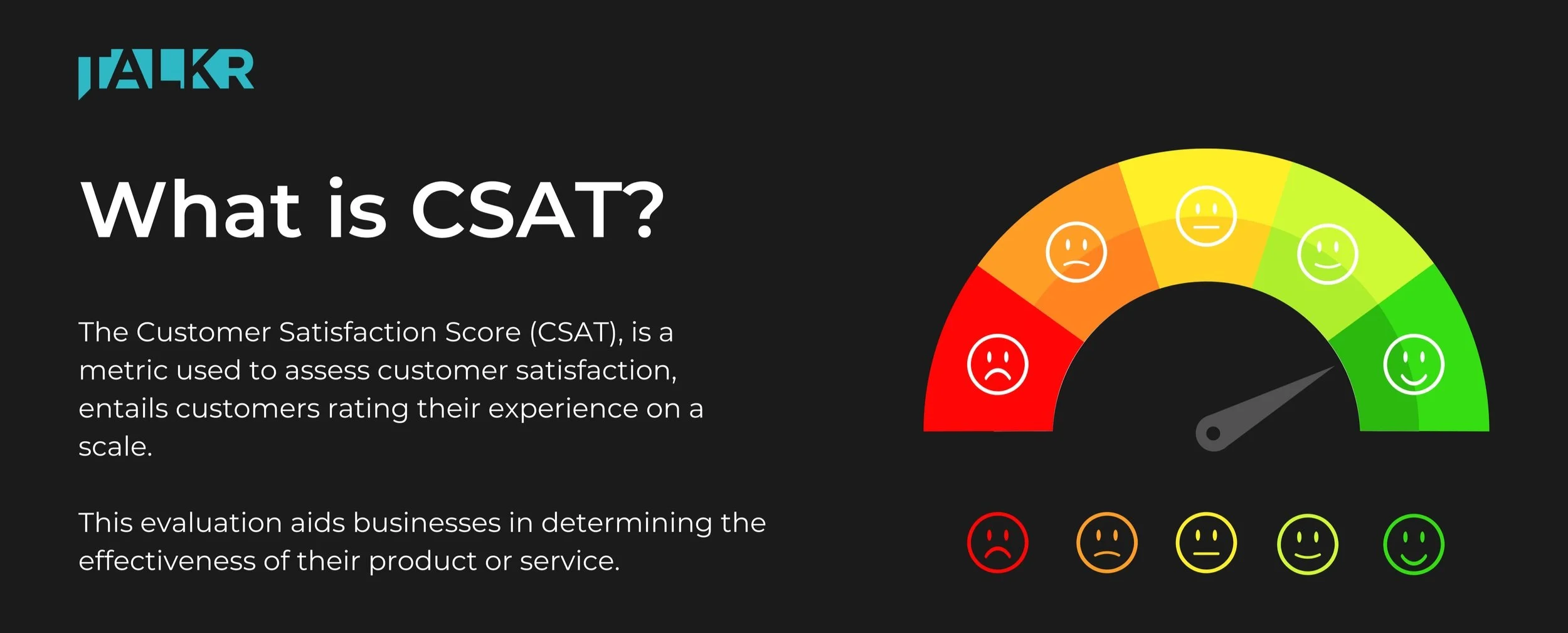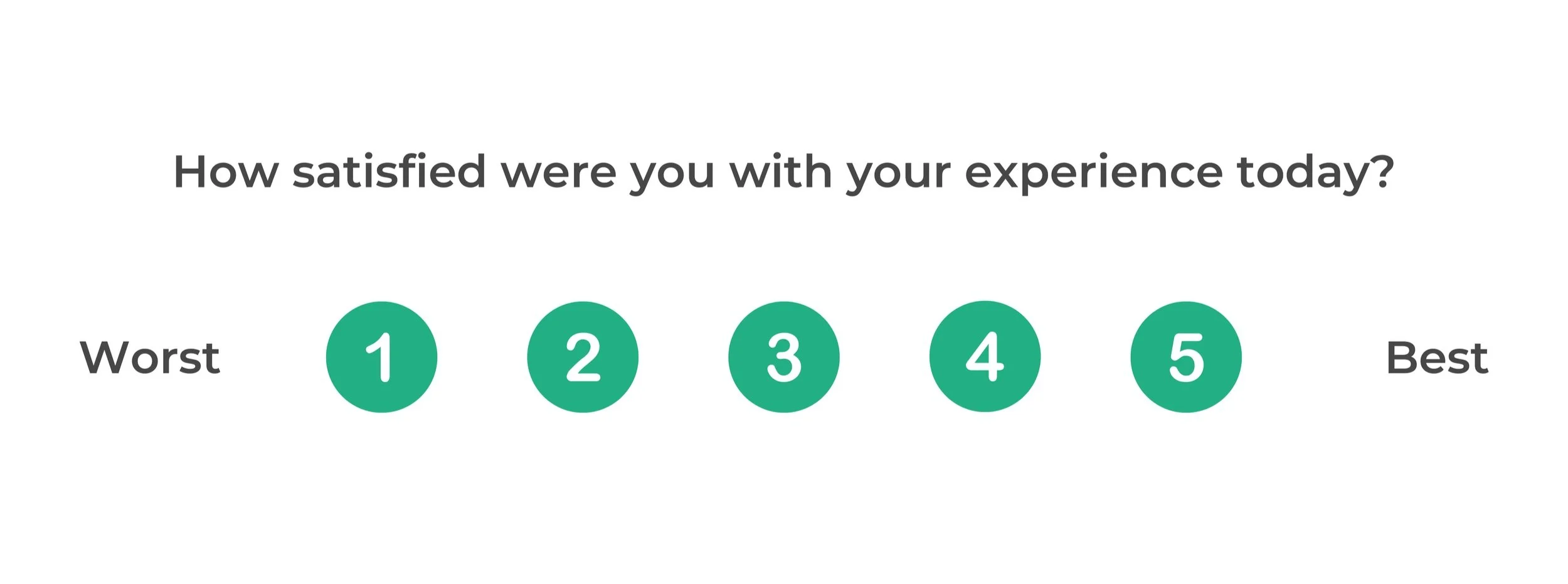Customer Satisfaction Score (CSAT): A Guide to Improving the Customer Experience
There really is nothing more valuable than a satisfied customer. Happy customers not only return for repeat business but also become advocates, attracting new customers and growth. But how do you know how happy your customers really are? The simplest way is to measure Customer Satisfaction (CSAT).
In this short guide we'll delve into what CSAT is, why it is important to measure it, and how to use its results to improve your customer experience.
What is Customer Satisfaction Score (CSAT)?
CSAT is a metric used to measure customer satisfaction with a specific product, service, or interaction. It typically involves asking customers a simple question: "How satisfied are you with [product/service/interaction]?" Respondents rate their satisfaction on a predefined scale (typically 1-5), ranging from "Very Unsatisfied" (1) to "Very Satisfied” (5).
The results are then converted into a percentage score based on the sum of the positive responses, divided by the total number of responses.
On a 1-5 scale the positive responses would be 4s and 5s. See how to calculate this below.
Why is CSAT Important?
Customer Satisfaction Score is invaluable for several reasons:
Customer Feedback: It provides a direct channel for customers to voice their opinions and feedback, allowing you to understand their sentiments and preferences.
Performance Evaluation: CSAT helps you assess the effectiveness of your products, services, and customer interactions from the customer's perspective.
Benchmarking: You can benchmark your CSAT scores against industry standards or competitors to identify areas where you excel or need improvement.
Customer Loyalty: Satisfied customers are more likely to remain loyal to your brand, make repeat purchases, and refer others, contributing to your long-term success.
How to Measure CSAT
Measuring CSAT is a straightforward process:
Select a Touchpoint: Choose a specific touchpoint or interaction with the customer that you want to evaluate. This could be a recent purchase, a support call, or the overall experience with your brand.
Ask the Question: Use a clear and concise question to inquire about satisfaction. For instance, "How satisfied are you with your recent support experience?" Provide a scale for responses.
Collect Responses: Gather responses from customers, usually through surveys or feedback forms. Ensure these are easy to access and complete.
Calculate the Score: Calculate the CSAT score by averaging the numerical responses. For example:
If you use a 5-point scale and receive 25 total responses
If 18 of these responses are “positive”, or a 4-5 on the 1-5 scale
You divide 18 by 25 (0.72), then x100 to give you a CSAT of 72%
Effective Strategies to Improve CSAT
Now that you understand the significance of CSAT, let's explore strategies to enhance it.
Like any metric, CSAT is industry specific but a good benchmark score is 75%.
Act on Feedback: Pay attention to the comments and suggestions provided by customers along with their CSAT ratings. Use this feedback to make tangible improvements to your products or services.
Train Your Team: Invest in training and development for your customer-facing teams, ensuring they can provide top-notch service and support.
Personalisation: Tailor your interactions with customers to their needs and preferences. Personalised experiences can significantly boost satisfaction.
Swift Issue Resolution: Address customer issues and concerns promptly and effectively. Timely resolution of problems can turn unhappy customers into satisfied ones.
Communication: Keep customers informed about changes, updates, and improvements to your offerings. Transparency fosters trust and satisfaction.
Regular Surveys: Continuously gather CSAT data to monitor trends and track improvements over time.
CSAT is a good guide, but not perfect
CSAT measures short-term sentiment, influenced by recent interactions and daily moods.
Benchmark data varies widely, making it hard to define good or bad scores.
"Satisfaction" is subjective, with varied meanings for different people.
Neutral and dissatisfied customers often skip surveys, risking skewed results.
CSAT is to be used alongside other customer metrics, such as Customer Effort Score (CES), in order to measure your overall customer experience as it alone will not give you the total picture.
In conclusion: Customer Satisfaction Score (CSAT) is a useful tool for businesses committed to delivering exceptional customer experiences. By actively measuring and improving CSAT, you not only enhance customer happiness but also drive loyalty and growth. Remember that CSAT is just one piece of the puzzle; it should be complemented by other customer-centric metrics and initiatives as highlighted in other blog posts of ours.

